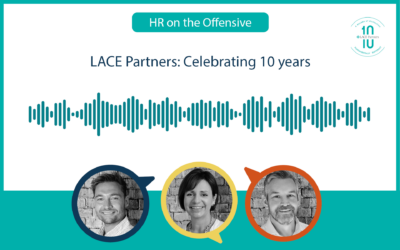 At a time in which we are seeing plenty of media coverage around counteroffers like the CIPD’s summer Labour Market Outlook, which was widely reported in the HR press, in today’s blog we thought we would take some time to look at the root cause of the reason – are organisations just masking deeper organisational issues? Chris Horton provides a LACE perspective.
At a time in which we are seeing plenty of media coverage around counteroffers like the CIPD’s summer Labour Market Outlook, which was widely reported in the HR press, in today’s blog we thought we would take some time to look at the root cause of the reason – are organisations just masking deeper organisational issues? Chris Horton provides a LACE perspective.
The persistence of counteroffers
Counteroffers will always exist. There are plenty of examples and research that are easily accessible to find that show the short-term statistics around counteroffers, which demonstrate that individuals eventually leave a business even after a counteroffer has been made and accepted. So why would companies do it when there is so much evidence to show that it often does nothing more than potentially add more cost to a business or delay the issue?
Treating symptoms, not causes
For many organisations, the benefits are clearly in keeping existing knowledge within the business and skills that the employee has. Losing a key employee can disrupt operations and cost the company time and money to hire and train a replacement. But whilst this is a short-term solution to an immediate staffing problem, you are treating the symptom and not the cause.
The deeper questions
Why has this person decided to take this measure to move in the first place? Or, equally, if you as a business are having to make multiple counteroffers to retain your talent, how do you deliver a compelling retention strategy of your talent that is not just going to hit your bottom line by paying people more when they try to leave?
The importance of Employee Value Proposition (EVP)
This is the fundamental question that every business should ask itself before taking any short-term measure. Too often, the thought process is that recruiting, hiring, and training new employees is costly. But if the business was delivering on the promise that is made to employees through a compelling employee value proposition (EVP), the transactional notion of “we just have to pay more to keep them” would become less of an issue.
The unseen costs of Counteroffers
There are also the intangible elements of counteroffers that are also not counted. Accepting a counteroffer can strain the trust and loyalty between an employee and their employer. Does the employee wonder why they were not fairly compensated before receiving an external offer? What does this say to other employees about the business approach, especially if they know a counteroffer could secure more favourable terms? How is career progression viewed for that employee?
Relying heavily on counteroffers to retain employees can impact the company’s reputation as an employer. It might signal to potential candidates that the company only responds when an employee threatens to leave.
Getting your EVP right is key
The debate over counteroffers continues to evolve in the ever-changing landscape of HR. While they may provide immediate relief, senior HR professionals should consider the long-term implications of this strategy. Building a robust Employee Value Proposition and addressing underlying issues within the organisation can often be a more sustainable solution for talent retention.
Some organisations rely on their brand and company purpose as a key driver of their EVP. SpaceX, for example, pays its leaders 5% less than any other competitor as their company purpose and EVP (putting humans on Mars) is so aspirational and compelling people will work for them for less. SpaceX leaders earn 5% less than the national average salary for leaders of $86,964, so their approach and mindset is that they don’t do “counter offers” as a policy, nor do they appear to need to. But not every organisation has the brand that will provide a ‘hook’ in such a way that they can be as bold and transactional in their approach to how they reward their people financially and avoid the counteroffer culture. So, what other options do organisations have?
Segmenting Your EVP
For some, segmentation of your EVP could be key, tailoring it to address the diverse needs of different employee personas within your business. Could that hold the key to reducing the reliance on counteroffers? Potentially, however, there is a danger of falling into the trap of the development of a myriad of personas and adding a layer of complexity to your EVP that is challenging to maintain. HR leaders must navigate this complex terrain with a clear understanding of the risks and rewards, always focusing on organisational health and long-term employee satisfaction. Retaining top talent goes beyond financial incentives; it is about creating a workplace where employees thrive and feel valued, even without the lure of external offers.
We’ve spoken about EVP repeatedly over the years, and in the coming weeks and months, we’ll also be providing more information, tools, podcasts, videos and other content that will give some practical advice and guidance on what you should be doing to ensure you are focused less on that cause and more on the symptom that we mention above.
Stay tuned to our Insights page over the coming weeks.






